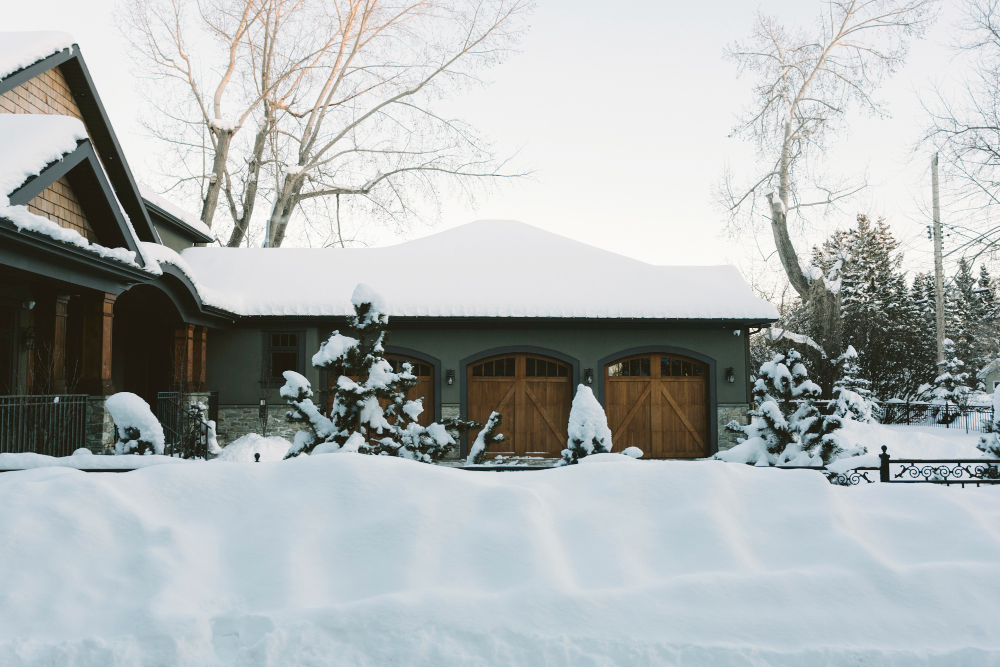A Golden Bridge Project
You can help defend against climate change,
and save money on your home energy bills.
We can show you how!
1500 +
PEOPLE WORKING WITH US
Contrary to popular belief, Lorem Ipsum is not simply random text. It has roots in a piece of classical Latin literature from 45 BC, making it over 2000 years old.
RECYCLING
There are many v ofpasages of Lorem Ipsum available, but the majority have sufred
ORGANIC
There are many v ofpasages of Lorem Ipsum available, but the majority have sufred
ECO SYSTEM
There are many v ofpasages of Lorem Ipsum available, but the majority have sufred
BIOLOGY
There are many v ofpasages of Lorem Ipsum available, but the majority have sufred
Over More than
150+ Projects WorldWide

You can help defend against climate change, and save money on your home energy bills.
Contrary to popular belief, Lorem Ipsum is not simply random text. It has roots in a piece of classical Latin literature from 45 BC, making it over 2000 years old. Richard McClintock, a Latin professor at Hampden-Sydney College in Virginia, looked up one of the more obscure Latin words, consectetur, from a Lorem Ipsum passage, and going through the cites of the word in classical literature, discovered the undoubtable source. Lorem Ipsum comes from sections 1.10.32 and 1.10.33 of “de Finibus Bonorum et Malorum” (The Extremes of Good and Evil) by Cicero, written in 45 BC. This book is a treatise on the theory of ethics, very popular during the Renaissance. The first line of Lorem Ipsum, “Lorem ipsum dolor sit amet..”, comes from a line in section 1.10.32.
We can show you how!
Contrary to popular belief, Lorem Ipsum is not simply random text. It has roots in a piece of classical Latin literature from 45 BC, making it over 2000 years old. Richard McClintock, a Latin professor at Hampden-Sydney College in Virginia, looked up one of the more obscure Latin words, consectetur, from a Lorem Ipsum passage, and going through the cites of the word in classical literature, discovered the undoubtable source. Lorem Ipsum comes from sections 1.10.32 and 1.10.33 of “de Finibus Bonorum et Malorum” (The Extremes of Good and Evil) by Cicero, written in 45 BC. This book is a treatise on the theory of ethics, very popular during the Renaissance. The first line of Lorem Ipsum, “Lorem ipsum dolor sit amet..”, comes from a line in section 1.10.32.

Our goal is to make Sherman a model community in reducing carbon emissions to mitigate climate change.
The Golden Bridge Project is a group of town folks who want to help Sherman become a model community in addressing climate change.

Our little Town of Sherman generates 42,358 tons of CO2 annually.
Over 84% of these carbon emissions are generated by home heating and electricity

This is approximately 22.3 tons of carbon per household

Heating and electricity costs for each household In Sherman averages $8,273 per year.
You can save 20-30% on home energy costs


What does clean, safe, local and sustainable energy look like and how will we get there?
Please click here and read the report from PACE, which is the source for the statistics above.
Over the next several months, we will show you how you can reduce CO2 emissions and save potentially hundreds to thousands of dollars annually on your home energy bills.
We will provide detailed information on:
Solar panels
Heat pumps
Improved insulation
Geothermal
Energy efficient lighting and appliances
We will include information about the technology, costs, savings, potential tax credits and similar subsidies.
In the meantime, perhaps you would like to read what the powerful new AI tool, called ChatGPT, has to say about home energy consumption, CO2 emissions and climate change. Just click on the links below.
As of the knowledge cutoff date in September 2021, residential energy use accounted for approximately 20% of the total U.S. energy-related CO2 emissions. It is important to note that this figure may have changed slightly since then, as energy consumption patterns and the energy mix in the United States continue to evolve.
Residential energy use primarily includes space heating, air conditioning, water heating, lighting, and appliance usage. By adopting energy-saving measures, homeowners can help reduce their carbon footprint and contribute to the overall reduction of CO2 emissions.
Homeowners in Connecticut can save on their energy costs by adopting a combination of energy efficiency measures, leveraging incentives and programs, and making smart energy choices. Here are some suggestions:
- Weatherize your home: Proper insulation, air sealing, and weatherstripping can reduce energy consumption by preventing drafts and heat loss. This can lead to significant savings on heating and cooling costs.
- Upgrade to energy-efficient appliances: Replacing older appliances with ENERGY STAR certified models can help you save on energy costs over time. Look for products like refrigerators, washers, dryers, and water heaters that have the ENERGY STAR label.
- Install a programmable or smart thermostat: These devices allow you to set temperature schedules based on when you're home or away, helping you save on heating and cooling costs. Some smart thermostats can even learn your habits and adjust automatically.
- Switch to LED lighting: LED bulbs consume less energy and have a longer lifespan than traditional incandescent bulbs. They can provide significant energy savings over time.
- Use energy-efficient windows: Double or triple-pane windows with low-emissivity (Low-E) coatings can help reduce heat transfer, keeping your home warmer in the winter and cooler in the summer.
- Maintain your HVAC system: Regular maintenance, including cleaning or replacing filters and scheduling annual tune-ups, can improve efficiency and extend the life of your heating and cooling systems
- Leverage energy-saving programs: Connecticut has several programs to help homeowners save energy and money. These include the Home Energy Solutions program, which offers home energy assessments and efficiency improvements, and financial incentives for upgrading to energy-efficient equipment.
- Consider renewable energy options: Installing solar panels or participating in community solar projects can help you save on your electricity bills while reducing your carbon footprint. Connecticut has incentives for solar installations, such as the Residential Solar Investment Program (RSIP).
- Choose time-of-use rates: Some utilities in Connecticut offer time-of-use rates, which charge different prices for electricity based on the time of day. By shifting your energy use to off-peak hours, you can save on your energy costs
- Practice energy conservation: Simple changes in behavior, such as turning off lights when not in use, unplugging electronics, using energy-saving settings on appliances, and washing clothes with cold water can add up to substantial savings over time.
By implementing these strategies, homeowners in Connecticut can reduce their energy consumption and save on their utility bills.
The amount homeowners in Connecticut can save on energy costs depends on various factors, including the size and age of their home, the efficiency of their appliances and heating/cooling systems, their energy usage habits, and the specific energy-saving measures they implement
However, here are some general estimates of potential savings:
- Weatherizing your home: Sealing air leaks and improving insulation can save 10-20% on heating and cooling costs.
- Upgrading to energy-efficient appliances: ENERGY STAR certified appliances can save anywhere from 10-50% on energy consumption, depending on the specific appliance and its age.
- Installing a programmable or smart thermostat: These devices can help you save around 10-15% on heating and cooling costs
- Switching to LED lighting: LED bulbs use about 75% less energy than incandescent bulbs, leading to a potential savings of $100 or more per year, depending on the number of bulbs replaced and usage patterns
- Energy-efficient windows: Homeowners can save up to 12% on their energy bills by installing energy-efficient windows
- Maintaining your HVAC system: Regular maintenance can improve efficiency by up to 15-20%, extending the system's lifespan and reducing energy costs
- Utilizing energy-saving programs: Participating in programs like Home Energy Solutions can result in energy savings of 5-30%, depending on the specific
- Installing solar panels: Solar panels can offset a significant portion of your electricity costs, with savings dependent on the size of the installation and available sunlight. In some cases, homeowners can save 50% or more on their electricity bills.
- Time-of-use rates: By shifting your energy usage to off-peak hours, you could save 5-15% on your energy costs.
- Energy conservation: Practicing energy conservation techniques can lead to savings of 5-15% on your energy bills.
Keep in mind that these are general estimates, and actual savings will depend on your specific situation. By combining multiple energy-saving strategies, homeowners inConnecticut can potentially save hundreds or even thousands of dollars per year on their energy costs.
Reducing energy consumption through energy efficiency measures and adopting renewable energy sources not only saves homeowners money but also reduces CO2 emissions, helping combat climate change. Here are some approximate CO2 emission savings for various energy-saving measures:
- Weatherizing your home: By reducing heating and cooling needs, homeowners can save approximately 1,000 to 2,000 pounds of CO2 emissions per year.
- Upgrading to energy-efficient appliances: Depending on the appliance type and usage, replacing old models with ENERGY STAR certified ones can save anywhere from 100 to 1,500 pounds of CO2 emissions per year.
- Installing a programmable or smart thermostat: These devices can reduce CO2 emissions by around 1,000 to 2,000 pounds per year, depending on your heating and cooling usage
- Switching to LED lighting: By using 75% less energy than incandescent bulbs, LED bulbs can reduce CO2 emissions by around 100 to 300 pounds per bulb per year, depending on usage.
- Energy-efficient windows: Installing energy-efficient windows can reduce CO2 emissions by up to 1,000 pounds per year
- Maintaining your HVAC system: Regular maintenance can decrease CO2 emissions by approximately 1,000 to 3,000 pounds per year.
- Utilizing energy-saving programs: By participating in programs like Home Energy Solutions, homeowners can reduce CO2 emissions by 5-30%, depending on the specific improvements made.
- Installing solar panels: Solar panels produce clean energy, reducing CO2 emissions by approximately 1.4 to 2.4 pounds for every kWh of electricity generated. For an average-sized residential solar installation, this can result in annual CO2 savings of around 3,000 to 10,000 pounds or more.
- Time-of-use rates: By shifting energy usage to off-peak hours, homeowners can help reduce peak demand and associated CO2 emissions.
- Energy conservation: Simple behavioral changes can lead to CO2 emission reductions of 5-15%.
These figures are approximate and will depend on factors such as your energy usage, the specific energy-saving measures you adopt, and the carbon intensity of your local electricity grid. By implementing multiple energy-saving strategies, homeowners in Connecticut can significantly reduce their CO2 emissions and contribute to the fight against climate change.
Here are some surprising facts about home energy use that many people may not be aware of:
- Vampire power: Many electronic devices and appliances consume energy even when they are turned off or in standby mode. This is called "vampire power" or "phantom load" and can account for up to 10% of a household's energy use.
- Water heating: Water heating is typically the second-largest energy expense in a home, accounting for about 14-18% of the total energy bill.
- Inefficient incandescent bulbs: Incandescent light bulbs only convert around 10% of the energy they consume into visible light, with the remaining 90% being released as heat.
- Insulation and air leaks: Up to 25% of a home's heat can be lost through poorly insulated walls and roofs, while around 10% of heat can escape through air leaks around windows and doors.
- Temperature impact on appliances: Refrigerators and freezers use more energy to maintain their temperature when placed in hot areas, such as near a heat source or in direct sunlight.
- Programmable thermostats: While programmable thermostats can save energy, many people do not utilize them effectively. Approximately 40% of programmable thermostats are not programmed, negating their potential energy savings.
- The impact of ceiling fans: Ceiling fans do not actually cool a room; they create a wind chill effect that makes people feel cooler. Therefore, leaving a ceiling fan running in an empty room does not save energy or cool the room.
- Laundry energy consumption: Nearly 90% of the energy used by washing machines goes towards heating the water, which is why washing with cold water can result in significant energy savings.
- Energy use of video game consoles: Some video game consoles can consume as much energy as a refrigerator when left in standby mode, making it important to turn them off completely when not in use.
- Seasonal energy use: Energy consumption often varies by season, with energy use typically higher in the winter and summer months due to heating and cooling demands. This makes seasonal adjustments and energy conservation practices crucial for reducing overall energy consumption
Being aware of these surprising facts can help homeowners make informed decisions about their energy use and implement effective strategies to reduce their energy consumption and associated costs.

Contrary to popular belief, Lorem Ipsum is not simply random text. It has roots in a piece of classical Latin literature from 45 BC, making it over 2000 years old. Richard McClintock, a Latin professor at Hampden-Sydney College in Virginia, looked up one of the more obscure Latin words, consectetur, from a Lorem Ipsum passage,

Contrary to popular belief, Lorem Ipsum is not simply random text. It has roots in a piece of classical Latin literature from 45 BC, making it over 2000 years old. Richard McClintock, a Latin professor at Hampden-Sydney College in Virginia, looked up one of the more obscure Latin words, consectetur, from a Lorem Ipsum passage,

Contrary to popular belief, Lorem Ipsum is not simply random text. It has roots in a piece of classical Latin literature from 45 BC, making it over 2000 years old. Richard McClintock, a Latin professor at Hampden-Sydney College in Virginia, looked up one of the more obscure Latin words, consectetur, from a Lorem Ipsum passage,

Contrary to popular belief, Lorem Ipsum is not simply random text. It has roots in a piece of classical Latin literature from 45 BC, making it over 2000 years old. Richard McClintock, a Latin professor at Hampden-Sydney College in Virginia, looked up one of the more obscure Latin words, consectetur, from a Lorem Ipsum passage,

Contrary to popular belief, Lorem Ipsum is not simply random text. It has roots in a piece of classical Latin literature from 45 BC, making it over 2000 years old. Richard McClintock, a Latin professor at Hampden-Sydney College in Virginia, looked up one of the more obscure Latin words, consectetur, from a Lorem Ipsum passage,

Contrary to popular belief, Lorem Ipsum is not simply random text. It has roots in a piece of classical Latin literature from 45 BC, making it over 2000 years old. Richard McClintock, a Latin professor at Hampden-Sydney College in Virginia, looked up one of the more obscure Latin words, consectetur, from a Lorem Ipsum passage,
PROOF STATEMENT
Contrary to popular belief, Lorem Ipsum is not simply random text. It has roots in a piece of classical Latin literature from 45 BC, making it over 2000 years old. Richard McClintock, a Latin professor at Hampden-Sydney College in Virginia, looked up one of the more obscure Latin words, consectetur, from a Lorem Ipsum passage, and going through the cites of the word in classical literature, discovered the undoubtable source. Lorem Ipsum comes from sections 1.10.32 and 1.10.33 of “de Finibus Bonorum et Malorum” (The Extremes of Good and Evil) by Cicero, written in 45 BC. This book is a treatise on the theory of ethics, very popular during the Renaissance. The first line of Lorem Ipsum, “Lorem ipsum dolor sit amet..”, comes from a line in section 1.10.32.
VARIOUS CREDIBLE SOURCES
Contrary to popular belief, Lorem Ipsum is not simply random text. It has roots in a piece of classical Latin literature from 45 BC, making it over 2000 years old. Richard McClintock, a Latin professor at Hampden-Sydney College in Virginia, looked up one of the more obscure Latin words, consectetur, from a Lorem Ipsum passage, and going through the cites of the word in classical literature, discovered the undoubtable source. Lorem Ipsum comes from sections 1.10.32 and

Why is this important?
Everyone has heard about climate change. Here are some facts that you may not know:
- There was a naturally caused spike in greenhouse gases fifty-six million years ago. Here is what happened.
- National Geographic has a short video regarding the effects of greenhouse gasses on climate.
- The Natural History Museum has information on climate and climate change
- Here is Wikipedia on the causes and effects of climate change
- This illustration shows how much coal, petroleum and natural gas the average person consumes over their lifetime.
- The State of Connecticut has set a goal of 45% reduction in greenhouse gasses by 2030 and 80% by 2050
What can you do about it?
Home Energy Overview
Reduce Energy Waste
Solar and Storage
Heatpumps & Geothermal
Recycling & Landscaping
Lighting & Appliances
Electric Vehicles
CONTACT US
You can contact us by email, using the form below. Your comments and suggestions are welcome. We may not be able to answer specific questions about your home, but we’ll try to steer you in the right direction, at least.

